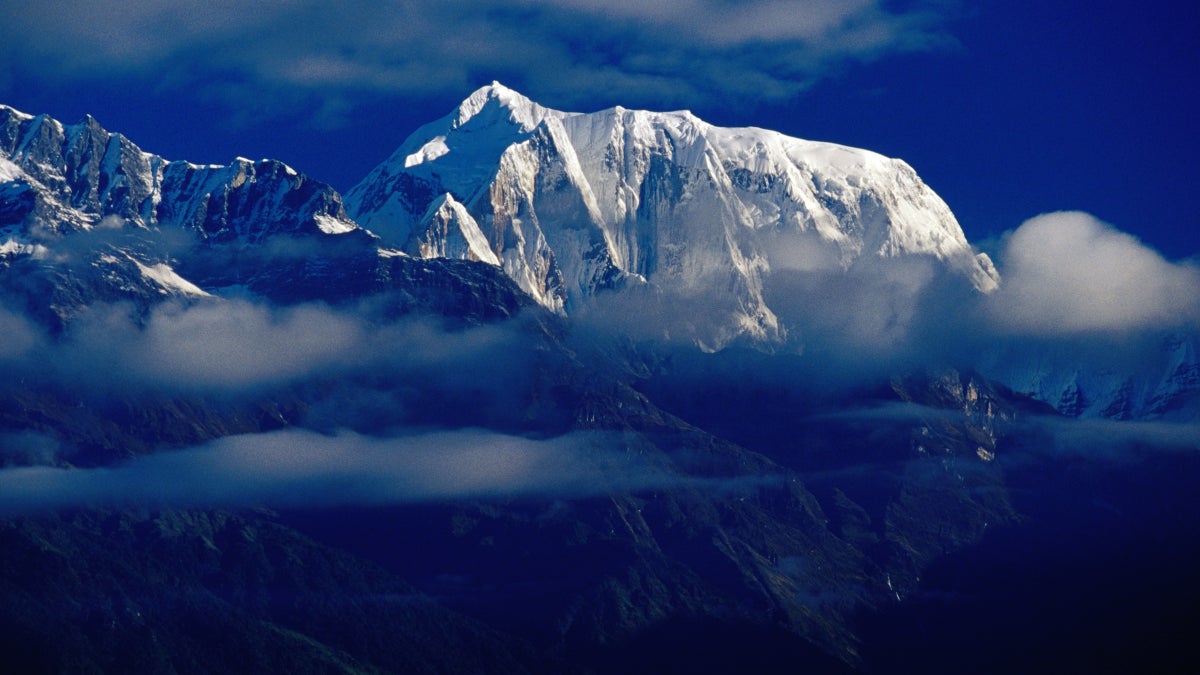No products in the cart.
Outdoor Adventure
Ukrainian Climbers Put Up Historic First Ascent on Annapurna III
For exclusive access to all of our fitness, gear, adventure, and travel stories, plus discounts on trips, events, and gear, sign up for Outside+ today
and save 50 percent.
On November 6, 2021 three Ukrainian climbers—Nikita Balabanov, Mikhail Fomin, and Viacheslav Polezhaiko—made the first ascent of the coveted southeast ridge on Annapurna III. The 24,787-foot peak is nestled in Nepal’s Himalaya, and its 7,500-foot southeast ridge has drawn and foiled the world’s leading alpinists for decades. The previous high point of 21,325-feet reached by British climbers Steve Bell, Nick Colton, and Tim Leach, had stood since 1981.
“Every mountain has a line that defines it; this line becomes the goal for climbers…this is the 2300-meter southeast ridge of Annapurna III,” wrote alpinist Conrad Anker in Alpinist 4 in 2003. The route, which Anker attempted with Alex Lowe in 1997, was included on Alpinist’s list of nine “big, aesthetic, and largely unknown” unclimbed alpine faces. These objectives were said to “demand the best climbers have to offer—and even then they may remain unattainable.”
The southeast ridge of Annapurna III was an obvious choice for inclusion. The route runs from the foot of the mountain to its summit, and is demanding, technical, and exposed. For decades it stood as one of last remaining great challenges in alpinism, and has attracted famed climbers since the peak itself was first climbed by a different route in 1961 by an Indian team. In a 2011 account of an attempt on the southeast ridge by Nick Bullock, Pete Benson, and Matt Helliker, Bullock wrote of the “saw-tooth monolith cutting straight through the heart of a cirque of mountains so remote and difficult to access that few have seen them.” He goes on to describe the route’s mesmerizing nature: “the history and hearsay behind the not-so-many-attempts drip with a fabled shroud. It is a compelling challenge for the alpinist.”
In 2016 Austrian climbers Alex Blume, the late David Lama, and the late Hansjorg Auer attempted the route, climbing what Auer described as “really difficult and exposed terrain” before turning around high on the mountain due to stormy weather. Lama called the route “the most spectacular ridge that I can imagine.”
But until this year, none of the roughly twelve attempts on the route were able to surpass the 1981 high point. The route had also previously thwarted the recently-successful Ukrainian trio of Balabanov, Fomin, and Polezhaiko when they first attempted the route in 2019. Like many other teams, they too were turned around due to weather and conditions.
The Ukrainian team has yet to post personal accounts of the trip, but they chatted in-person with The Himalayan Database (which keeps track of climbing statistics in the range) after their ascent. The database posted about the conversation on Facebook, sharing a hint of the climb’s nature, describing “their harrowing climb, their amazing endurance, the nights they spent on the smallest ledges in their tiny two-man-tent, Viacheslav Polezhaiko’s ability to ‘feel’ the snow when he descended into [a whiteout], their precise timing with food and gas and their intuition to take the only possible descent line towards Annapurna South base camp! This is true Alpinism and very refreshing to see.”
In another Facebook post, Yana Rostem, a manager at Ukrainian guiding company Kuluar Pohod, where Polezhaiko and Balabanov work, addressed the media. She shared photos and tidbits about the men’s climb, which she said took 18 days. Rostem noted that the climbers faced high winds and snow everyday and ran out of food on their second-to-last day out. On November 11, just five days after their historic summit, the men returned to the Kiev airport to an emotional crowd of friends, family, and well wishers.

